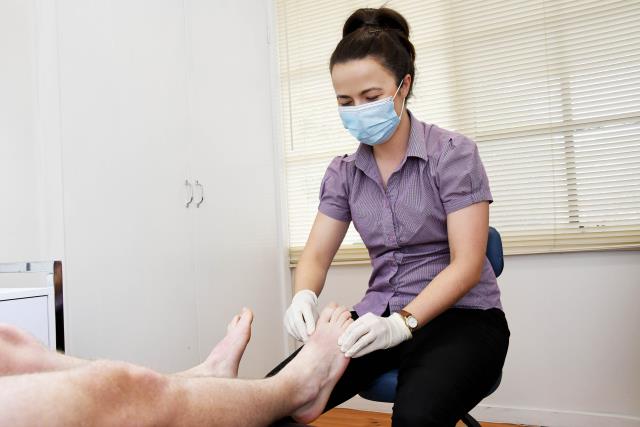There’s a belief out there that heel pain is an unavoidable part of life.
If you don’t have a sore heel now, you will know someone who’s heel gives them trouble in the morning or when they walk more.
Because of the prevalence of sore heels, you might assume that it’s normal to have heel pain.
For years medical science had this belief too – there’s still textbooks in print today that state heel pain is self limiting, that it hurts but it will go away all on its own.
This couldn’t be further from the truth.
Heel pain has proven links to ongoing pain, disability and depression for years and years after symptoms first start.
Research out of La Trobe University in Melbourne has connected the negative impact on our lives of having heel pain. (1)
So what can you do about it?
Having heel pain is common, so knowing that you’re not alone with your sore heel is the first step to moving forwards and resolving your pain.
The next steps are to find out the exact causes of your sore heels, and then what you need to do to treat and resolve your pain.
For that, we turn to the expert advice of our local Emerald podiatrists, Tanya Contis and Laura Ward.
Tanya and Laura have given us their top three tips of what someone can do to overcome their heel pain:
Tip 1: Get an accurate diagnosis.
Tanya said, “Most people get a sore heel and think that it has to be a heel spur, which is certainly a common type of heel pain, but not usually the culprit. Visit a podiatrist for an accurate diagnosis so you can then treat the cause of your symptoms.”
“You’d hate to waste time and money treating a heel spur when you actually have plantar fasciitis or achilles tendonitis,” Laura added
Tip 2: Commit to change
The podiatrists agree that change needs to happen to resolve heel pain.
Laura said, “If you want to get rid of your heel pain and to do that you need to wear a different pair of shoes, orthotics or do some exercises at home, you need to commit to change some behaviours and habits.”
With the research out of La Trobe Uni connecting the mental health challenges of heel pain suffering this can be hard on your own.
Laura has another tip – “To change we need to make some things easier, and others harder. For shoes this might mean moving your good shoes to the front of the cupboard and placing the shoes less ideal for your heel out in the shed for a few weeks. That distance will make you more likely to wear what your heels need for a while.”
Tip 3: Follow the evidence
There’s now shocking amounts of evidence that different types of heel pain can be treated effectively – and one of those treatments is known as Shockwave Therapy.
The podiatrists at Emerald are now offering Shockwave Therapy and are very happy with the results.
Tanya explains, “With shockwave therapy we’re able to send comfortable, targeted zaps of ultrasound energy waves into heel tissues that kick start the healing process. When we combine improved healing rates with other evidence based treatments like shoes, orthotics and exercises your heel pain can be treated and reduce your chances of serious long term effects too.”
And with that, our urgency to avoid the negative long term effects of heel pain is spurred into action. You don’t need to wait and see your heel pain deteriorate and interrupt your life long term.
Follow the advice of the podiatrists Tanya and Laura and you have a new path away from heel pain.
Reference:
1. Depression, Anxiety, and Stress in People With and Without Plantar Heel Pain (Journal of Foot and Ankle International, 2016)







